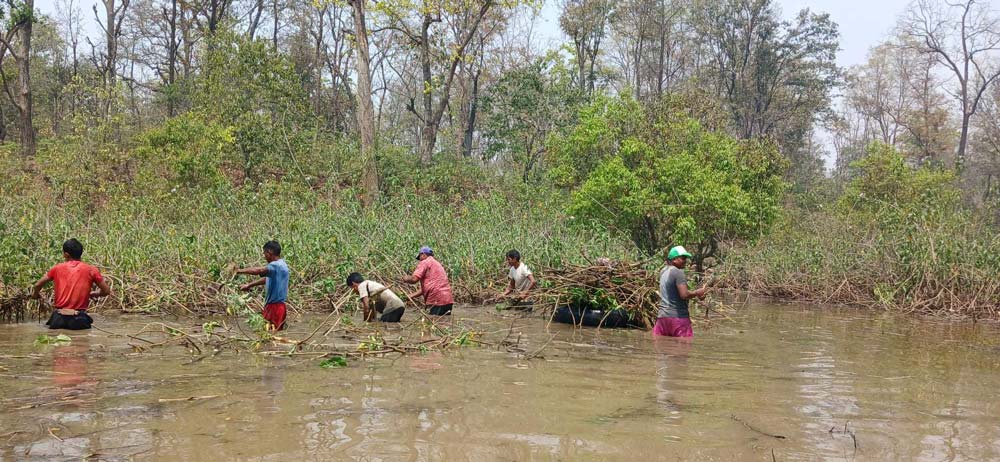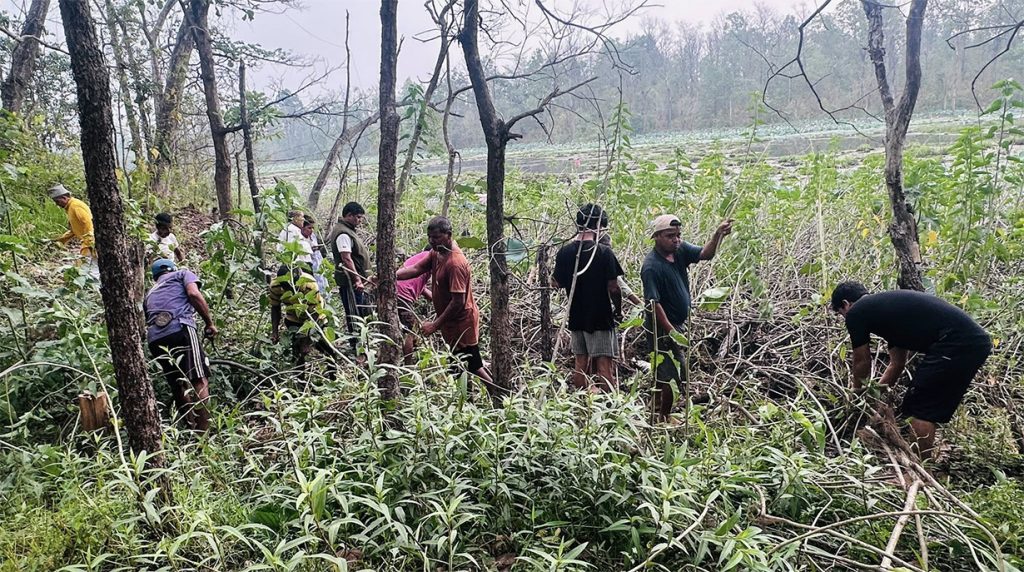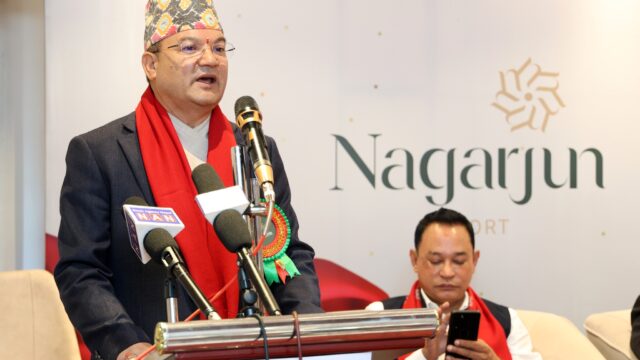Ghodaghodi Lake, a vital ecological treasure located in Kailali district and listed under the Ramsar Convention as a wetland of international importance, has recently become the focus of a major environmental intervention. Authorities have launched a campaign to remove the invasive Besharam weed species (commonly known as Ipomoea carnea) that is threatening the lake’s ecosystem. This large-scale initiative was commenced due to the alarming spread of the invasive plant across the lake’s northern and eastern shores.
Growing Threat to a Biodiversity Hotspot
Ghodaghodi Lake is not only Nepal’s first officially declared Bird Sanctuary (Bird Century) but also one of the most biologically diverse wetland systems in the country. The lake and its surrounding ecosystem support over 380 bird species, including many that are globally threatened. However, in recent years, the unchecked spread of invasive plants like Besharam, water hyacinth, and climbing vines has posed a significant threat to this rich biodiversity.
According to Ramchandra Kandel, Divisional Forest Officer at the Division Forest Office in Pahalmanpur, the removal project is being conducted under the annual work plan of the Ministry of Industry, Tourism, Forest and Environment of Sudurpaschim Province. “We have initiated the removal of invasive species with a budget of NPR 500,000 allocated by the provincial government,” Kandel said.
The spread of Besharam has already significantly narrowed the open water area, particularly in regions such as Badka Siraha, Chhotki Siraha, and Chhotki Chhintiliya in the northern and eastern parts of the lake. “These weeds completely cover the water surface, blocking sunlight and reducing oxygen levels in the water, which in turn endangers native aquatic plants and fish,” Kandel explained.
Ecological Consequences of Invasive Weeds
Environmental experts warn that if the invasive plants are not managed in time, Ghodaghodi’s wetlands and aquatic ecosystems could face irreversible damage. The overgrowth of Besharam and similar invasive species reduces water clarity, increases eutrophication, and threatens the life of aquatic animals such as fish, turtles, and amphibians. Additionally, migratory and resident birds that rely on open water surfaces for feeding and roosting are losing their natural habitats.
Daya Ram Chaudhary, president of the Bird Conservation Network, emphasized the urgency of the issue. “Without immediate control, the invasive weed could destroy the wetland’s ecological balance, putting both biodiversity and tourism potential at risk,” he warned.
In the previous fiscal year, the Division Forest Office had successfully cleared 2.5 hectares of Besharam. This year, the goal is to remove the weed from 2.8 hectares, focusing on the most affected zones.

Home to Globally Threatened Species
Shaped like a palm, Ghodaghodi Lake is a nesting ground for several rare and endangered bird species. Among them are the sarus crane (Antigone antigone), white-rumped vulture (Gyps bengalensis), slender-billed vulture (Gyps tenuirostris), and lesser adjutant stork (Leptoptilos javanicus). Additionally, Ghodaghodi is the only breeding ground in Nepal for three unique species: the lesser whistling duck, gadwall, and ruddy-breasted crake.
Apart from birds, the lake provides crucial habitat for other wildlife such as python, pangolin, otter, leopard, wild boar, hare, porcupine, langur, rhesus monkey, jackal, mongoose, and even marsh crocodiles (Crocodylus palustris). Reptiles like the golden monitor lizard and various species of lizards and turtles also thrive in this wetland ecosystem.
Due to this incredible ecological richness, Ghodaghodi was declared Nepal’s first Bird Century on March 11, 2022 (Falgun 27, 2078 BS), setting a benchmark in the country’s commitment to avian conservation.
Importance for Conservation and Ecotourism
Ghodaghodi Lake not only holds ecological importance but also serves as a hub for nature-based tourism. Birdwatchers, researchers, and tourists are increasingly drawn to the area to experience its natural beauty and observe rare wildlife. However, the spread of invasive species and lack of continuous management threaten to undermine both the ecological integrity and tourism potential of the region.
Experts are calling for regular monitoring, community engagement, and a sustainable management plan to protect the wetland in the long term. “We must act collectively to ensure this unique ecosystem continues to flourish. It’s not just a sanctuary for birds and wildlife; it’s a heritage for future generations,” said Chaudhary.
Need for Infrastructure and Policy Support
While local authorities and environmentalists have taken initiative, more robust policy and infrastructural support are needed. Regular budgeting, capacity building of local conservation groups, and implementation of wetland management policies are essential for the sustainable conservation of Ghodaghodi.
The effort to remove invasive weeds is a step in the right direction, but experts agree that long-term conservation will require collaborative action involving government agencies, local communities, conservation organizations, and academic institutions.






